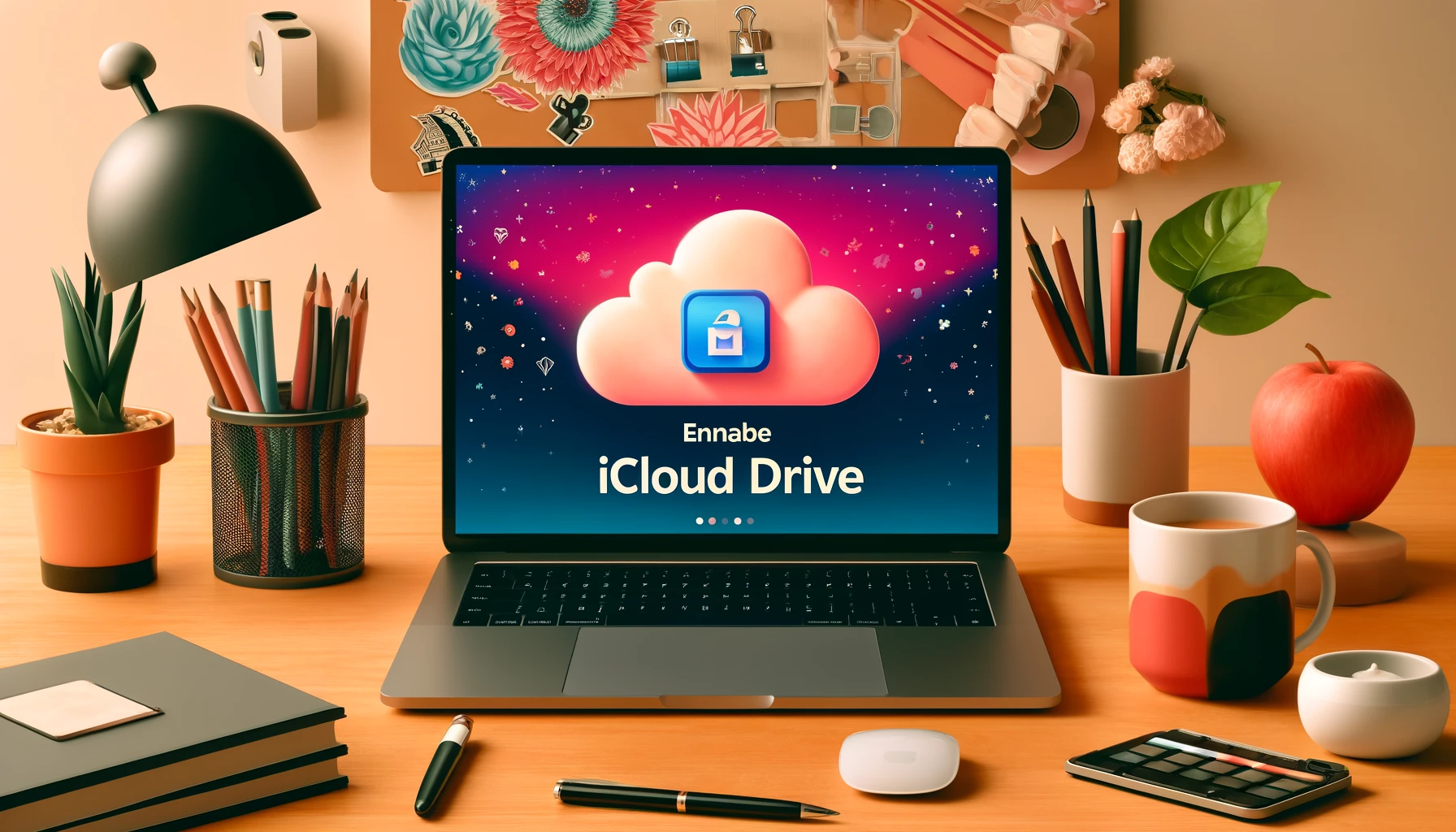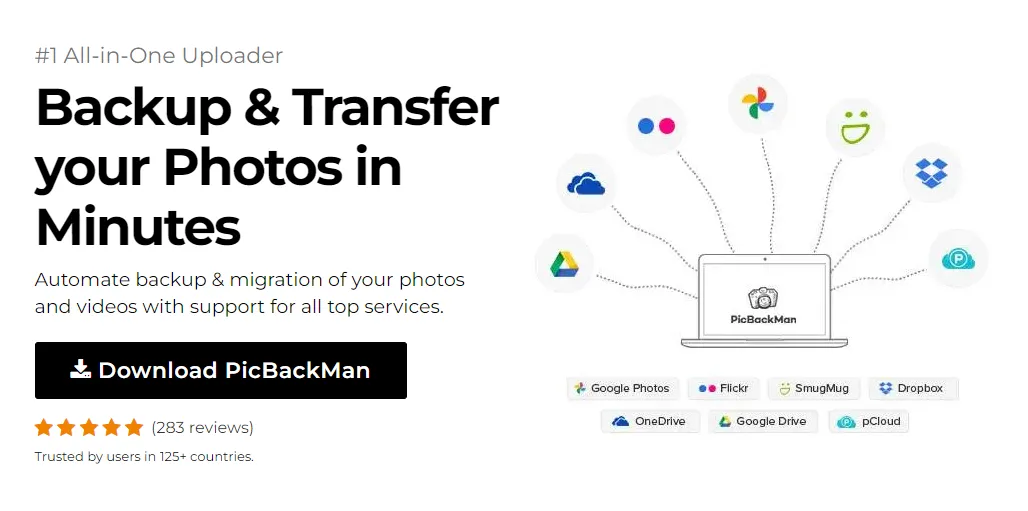
How to Enable iCloud Drive on Mac?


Enabling iCloud Drive on your Mac is a game-changer, offering seamless synchronization of your files across all Apple devices. Whether you are a student, professional, or a casual user, understanding how to enable iCloud Drive can greatly enhance your productivity. This guide will provide detailed instructions, tips, and insights to help you make the most of iCloud Drive on your Mac.
In today's digital age, cloud storage solutions have become indispensable. Apple's iCloud Drive is one such service that allows you to store, sync, and access your files from any Apple device. This article will guide you through the process of enabling iCloud Drive on your Mac, providing you with the tools and knowledge to utilize this powerful feature effectively.
What is iCloud Drive?
iCloud Drive is Apple's cloud-based storage service that allows you to store documents, photos, videos, and more, and access them from any device logged into your iCloud account. It integrates seamlessly with macOS, iOS, and even Windows, providing a unified storage solution.
Benefits of Using iCloud Drive
- Seamless Integration: iCloud Drive integrates perfectly with macOS and iOS, allowing for smooth file transfers and backups.
- Accessibility: Access your files from any device logged into your iCloud account, including Macs, iPhones, iPads, and even Windows PCs.
- Security: Apple's robust security measures ensure that your data is safe and encrypted.
- Collaboration: Share files and collaborate with others easily using iCloud Drive's sharing features.
How to Enable iCloud Drive on Mac
System Requirements
Before enabling iCloud Drive, ensure your Mac meets the following system requirements:
- macOS Yosemite (10.10) or later
- An active iCloud account
Checking macOS Version
To check your macOS version:
- Click the Apple menu () in the top-left corner of your screen.
- Select "About This Mac."
- Check the version number under the "Overview" tab.
Updating macOS
If your macOS version is outdated, follow these steps to update:
- Open the Apple menu () and select "System Preferences."
- Click "Software Update."
- Follow the on-screen instructions to update your macOS.
Signing into iCloud
To enable iCloud Drive, you need to be signed into your iCloud account:
- Open the Apple menu () and select "System Preferences."
- Click "Apple ID."
- Enter your Apple ID and password, then click "Sign In."
Enabling iCloud Drive
- Open "System Preferences" from the Apple menu ().
- Click "Apple ID" and select "iCloud" in the sidebar.
- Check the box next to "iCloud Drive."
- Click "Options" next to "iCloud Drive" to customize which apps and folders use iCloud Drive.
Customizing iCloud Drive Options
Choosing Apps to Use iCloud Drive
You can select which apps store data in iCloud Drive:
- Click "Options" next to "iCloud Drive" in the iCloud settings.
- Check or uncheck the boxes next to the apps you want to sync with iCloud Drive.
- Click "Done" to save your preferences.
Managing Storage Space
iCloud Drive comes with 5GB of free storage, but you can upgrade if needed:
- Open "System Preferences" and click "Apple ID."
- Select "iCloud" and then click "Manage."
- Choose "Change Storage Plan" to select a new plan that suits your needs.
Accessing iCloud Drive on Mac
Using Finder
To access iCloud Drive through Finder:
- Open Finder from the Dock.
- Select "iCloud Drive" from the sidebar.
- Browse your files and folders stored in iCloud Drive.
Saving Files to iCloud Drive
To save a file directly to iCloud Drive:
- Open the document you wish to save.
- Click "File" in the menu bar and select "Save As."
- Choose "iCloud Drive" as the save location.
Syncing Desktop and Documents Folders
You can sync your Desktop and Documents folders with iCloud Drive:
- Open "System Preferences" and click "Apple ID."
- Select "iCloud" and click "Options" next to "iCloud Drive."
- Check the box next to "Desktop & Documents Folders."
Troubleshooting iCloud Drive Issues
Common Problems and Solutions
-
iCloud Drive Not Syncing:
- Ensure you are connected to the internet.
- Check that iCloud Drive is enabled in System Preferences.
- Restart your Mac.
-
Insufficient Storage:
- Manage your storage by deleting unnecessary files or upgrading your storage plan.
- Use "Optimize Mac Storage" to keep older files only in iCloud.
Contacting Apple Support
If you encounter issues that you cannot resolve, contact Apple Support for assistance:
- Visit the Apple Support website.
- Choose "iCloud" and then "iCloud Drive."
- Select the issue you are facing and follow the on-screen instructions.
Quick Tip to ensure your videos never go missing
Videos are precious memories and all of us never want to ever lose them to hard disk crashes or missing drives. PicBackMan is the easiest and simplest way to keep your videos safely backed up in one or more online accounts. Simply Download PicBackMan (it's free!), register your account, connect to your online store and tell PicBackMan where your videos are - PicBackMan does the rest, automatically. It bulk uploads all videos and keeps looking for new ones and uploads those too. You don't have to ever touch it.
Frequently Asked Questions
How do I turn on the iCloud Drive on my MacBook?
To turn on iCloud Drive on your MacBook, follow these steps:
- Open the Apple menu () and select "System Preferences."
- Click on "Apple ID" and then select "iCloud" in the sidebar.
- Check the box next to "iCloud Drive."
- Click "Options" next to "iCloud Drive" to choose the apps and folders you want to sync.
Why can't I access my iCloud Drive on Mac?
If you can't access your iCloud Drive on your Mac, try the following troubleshooting steps:
- Ensure you are signed into iCloud with the correct Apple ID.
- Verify that iCloud Drive is enabled in the System Preferences under "Apple ID" > "iCloud."
- Check your internet connection to ensure you are online.
- Restart your Mac to resolve any temporary issues.
How do I grant access to iCloud Drive?
To grant access to iCloud Drive:
- Open "System Preferences" from the Apple menu ().
- Click "Apple ID" and select "iCloud" in the sidebar.
- Ensure "iCloud Drive" is checked.
- Click "Options" next to "iCloud Drive" and select the apps you want to allow access.
How do I force iCloud Drive to sync on Mac?
To force iCloud Drive to sync on your Mac:
- Ensure you are connected to the internet.
- Open Finder and select "iCloud Drive" from the sidebar.
- Drag the file or folder you want to sync into iCloud Drive.
- Wait for the sync icon (a cloud with an arrow) to disappear, indicating the file has been synced.
- If syncing issues persist, restart your Mac to refresh the connection.
Why is my iCloud Drive not syncing with my Mac?
If your iCloud Drive is not syncing with your Mac, try these steps:
- Ensure that iCloud Drive is enabled in "System Preferences" under "Apple ID" > "iCloud."
- Check your internet connection.
- Restart your Mac to refresh the system.
- Ensure you have enough iCloud storage available.
- Update your macOS to the latest version.
Why is my iCloud Drive not uploading?
If your iCloud Drive is not uploading files, try these solutions:
- Check your internet connection to ensure you are online.
- Ensure that iCloud Drive is enabled and you are signed into iCloud.
- Verify that there is enough available storage in your iCloud account.
- Restart your Mac to resolve any temporary issues.
- Update your macOS to ensure compatibility with iCloud services.
Conclusion
Enabling iCloud Drive on your Mac is a straightforward process that can greatly enhance your productivity and file management capabilities. With iCloud Drive, you can access your files from any device, ensuring that your important documents are always within reach. By following the steps outlined in this guide, you'll be able to set up and customize iCloud Drive to suit your needs, providing a seamless and secure storage solution.
Backup & Transfer your Photos in Minutes
Automate backup & migration of your photos & videos with support for all top services.
Trusted by users in 125+ countries.










